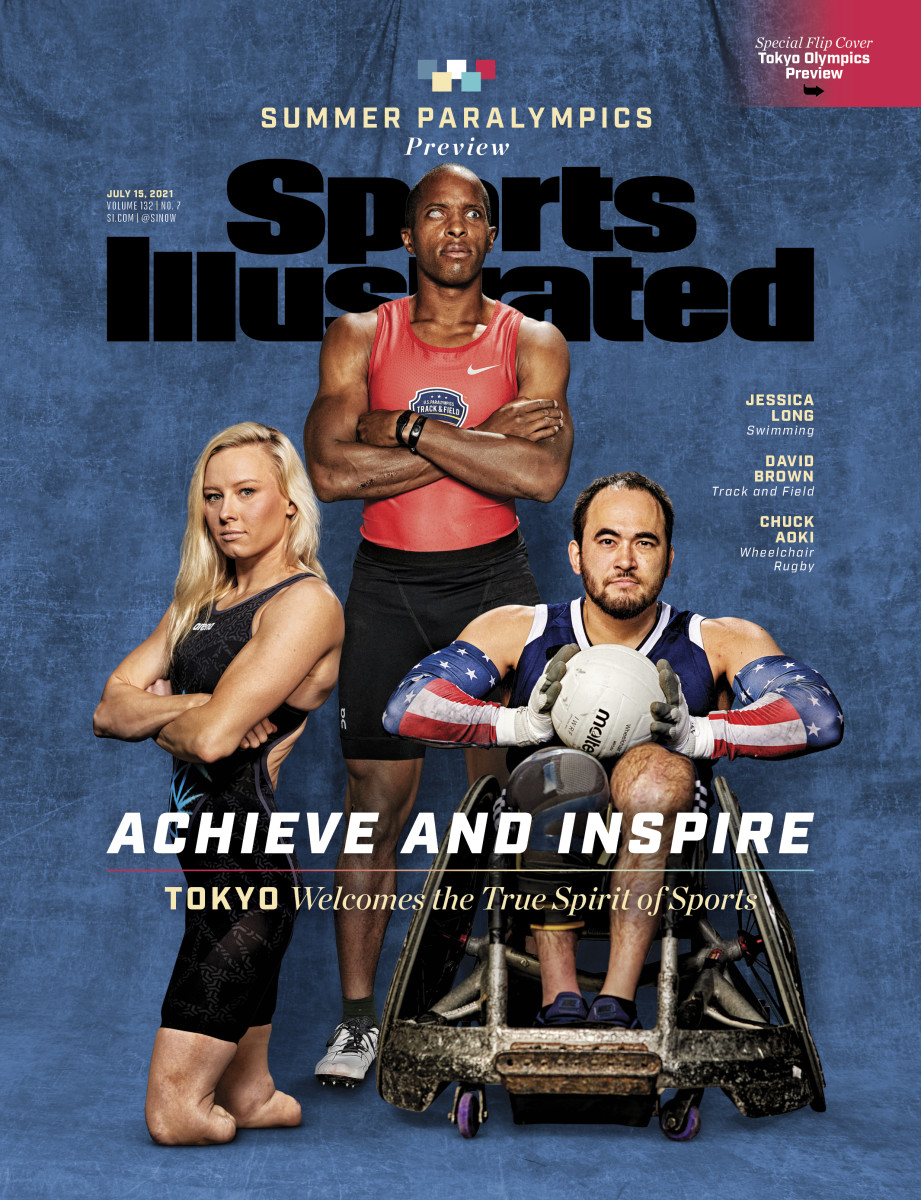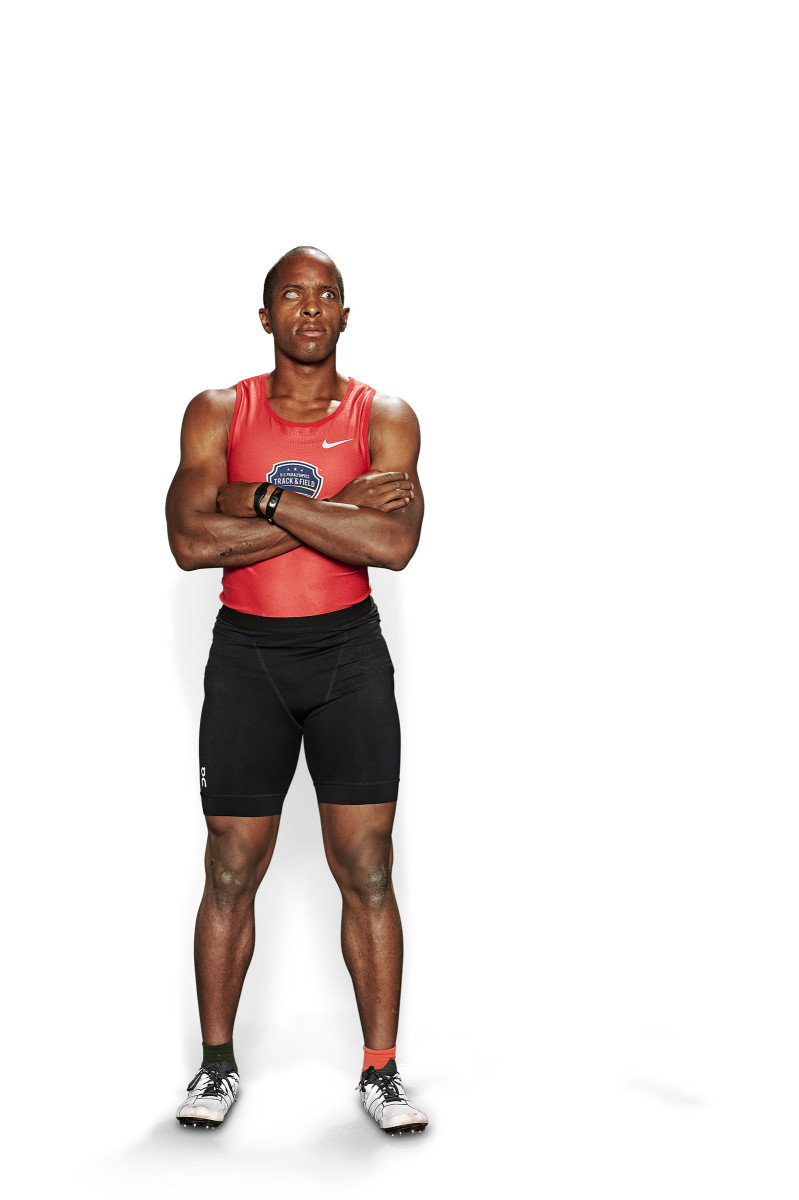Going Straight—And Fast
After a year's delay, and only 16 days after the conclusion of the Summer Olympics, all eyes will turn once again to Tokyo, which will become the first city to host the Paralympics for a second time. More than 4,350 athletes from 168 countries will contend across 22 sports in the 16th edition of the event, which is designed to drive awareness and change perceptions of those with disabilities and impairments. The competition for medals will be fierce.
When sprinter David Brown, the reigning Paralympic 100-meter gold medalist in the T11 totally blind category and the event’s world-record holder at 10.92 seconds, thinks back to a lost year of competition caused by COVID-19, he focuses on everything he gained.
Unable to access his home base, the Chula Vista Elite Athlete Training Center outside San Diego, Brown found a “state of comfort” in simpler exercises: jumping rope, taking long walks and doing “like 2,000 ab exercises in a day.” He bought an Apple Watch to monitor his calorie count and cut out gluten and dairy. “It throws off a lot of people when I say this,” Brown adds, “but I was able to find out how I could run by myself. And not only by myself: I’ve learned how to run straight.”
In past competitions this task has fallen to Jerome Avery, his full-sighted, full-throated guide runner who must keep Brown from leaving his lane (disqualification) or crossing the finish line behind Avery (ditto). A former top-15 finisher at the U.S. Olympic Trials who pivoted to helping Team USA’s blind athletes after failing to make the national team in 2004, Avery, 42, does this through both booming commands—Twenty meters in! Ten to go! Lean!—and subtle contact, nudging Brown to steer him away, or tugging on their 30-centimeter rubber tether, which is attached to Brown’s left hand and Avery’s right, to bring him closer.

The result is an act of high-speed harmony unique in sports, every arm swing and stride mirrored as the pair huffs down the track. “Two people coming as one,” Brown says. But 30 centimeters is less than six feet, of course, and when social distancing began, Brown and Avery—or, to use their self-appointed nickname, Team BrAvery—spent some five months apart.
Avery used the time off to focus on activities outside track in the San Diego area, working on a foundation for limited-vision athletes and adopting a Cane Corso puppy. Brown wanted no such break; when the 2020 Tokyo Paralympics were postponed, he recalls, his first thought was, “What time is practice?” So he started running sprints at a park in Chula Vista while his fiancé, Rebekah Hill—or later, once COVID-19 restrictions eased, his coach, Joaquim Cruz—stood at the end of the track and clapped. “I had to hone in to the sound,” Brown says. “That helped me learn, one, where they are. And then, how does my body need to feel to keep myself in that direction?”

On a hot morning in early June, at the far end of a track and field complex in Chula Vista abuzz with elite Para athlete activity—a runner testing out new blade prosthetics, a thrower chucking javelins from his wheelchair—Brown is vomiting. He didn’t eat breakfast before this hourlong sprint workout, though, so only water comes out when he ducks into the bushes during his third cooldown lap. “Happens,” Brown shrugs. “We just get up like it ain’t nothing.”
Diagnosed with Kawasaki disease at 15 months and blind in both eyes by age 13 due to resulting glaucoma, Brown took up track soon after moving from Kansas City, Mo., with his family to enroll at the Missouri School for the Blind in
St. Louis in 2004. But it wasn’t until he won an essay contest to attend the ’08 Beijing Paralympics that Brown began thinking bigger. “My vision,” he wrote, “is set on being a part of the Paralympics.”
These goals were reinforced at Beijing National Stadium, where Brown, then wearing glasses but barely able to make out the moving specks on the track, glimpsed U.S. sprinter Josiah Jamison win the 100 meters of the T12 category (very low visual acuity and/or no light perception). Jamison’s guide: none other than Avery.
Two years later, in 2010, Brown went to Philadelphia to compete in the prestigious Penn Relays. There, his assigned partner turned out to be a familiar figure. “We hit it off immediately,” Avery says. After a mediocre race, they went their separate ways only to reunite four years later, in Chula Vista, when Brown was looking for a new guide and Cruz paired him with Avery for a couple of workouts. In their first race back together Brown PR’ed, and later in ’14 he became the first T11 sprinter to break 11 seconds in the 100 meters.
Over time, each runner has further adapted to the other. For Avery, this has meant shortening his long stride to better mirror Brown’s quick-turnover, power-sprinting style. Brown, meanwhile, was happy to oblige when Avery asked to switch their starting leg positions because he was having hip problems coming off his left. They even tapped into their mutual love of music to better sync up their movements during warmup laps; Brown will beat-box, and Avery will freestyle rap. “Like a metronome,” Avery says.

The peak of their partnership came in the 100 final in Rio, where Brown blazed to a Paralympics record (10.99) and Avery got so carried away with excitement that he forgot to tell his partner the result. Says Brown, “I just remember coming across the line and I’m thinking to myself, Well, did we win? I guess we did ’cause he’s celebrating over here, going crazy.”
But after winning gold at the world championships, in 2017, Team BrAvery failed to advance beyond the ’19 semis, finishing sixth. Then came the unprecedented layoff, during which Avery came down with plantar fasciitis. As a result, the early-June workout was among their only practices on the starting blocks together since March ’20; later in the month, Brown won his 100-meter heat at the U.S. team trials, in 11.38 seconds, with the aid of another guide runner, San Diego Mesa College freshman Moray Steward, who will be his guide in Tokyo. Regardless, his approach won’t change whenhe returns to the global stage.
Brown will climb into his starting spot, with Steward adjusting his head and hands to make sure they are oriented straight ahead. He will slip the tether over his fingers. Then he will take off down the track, he and his guide in perfect sync—meter for meter, stride for stride, beat for beat.
Jessica Long is Unparalleled
Chuck Aoki Wants Another Trophy
How Kelly Elmlinger's Fateful Work Led Her to the Paralympics
